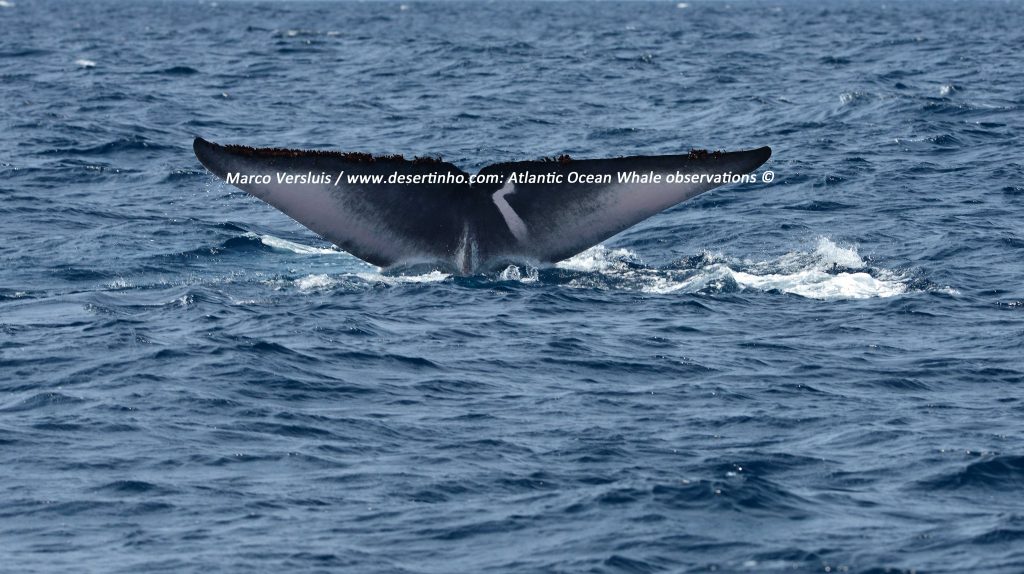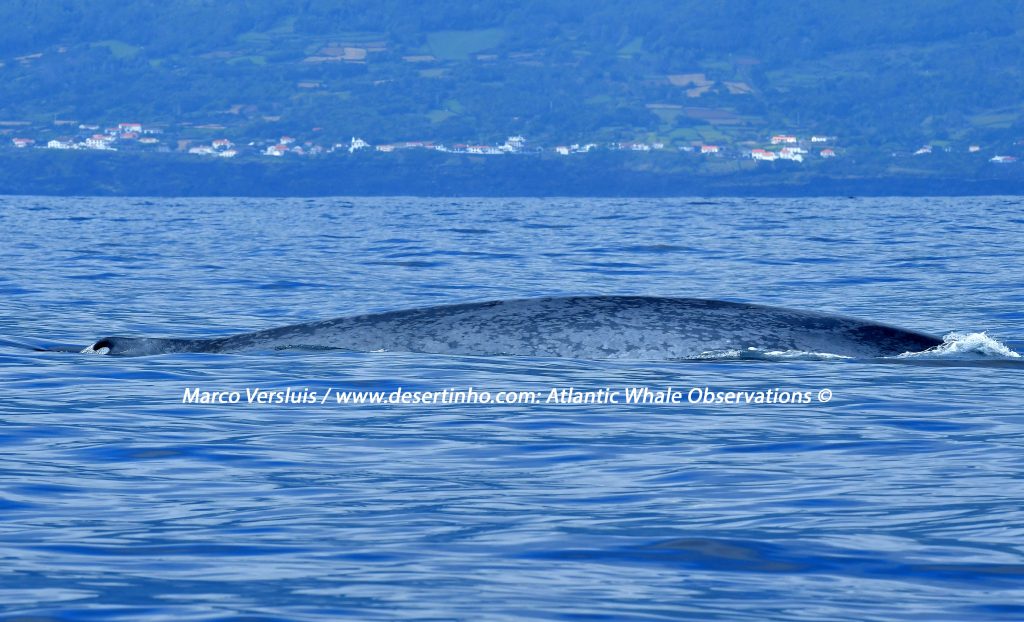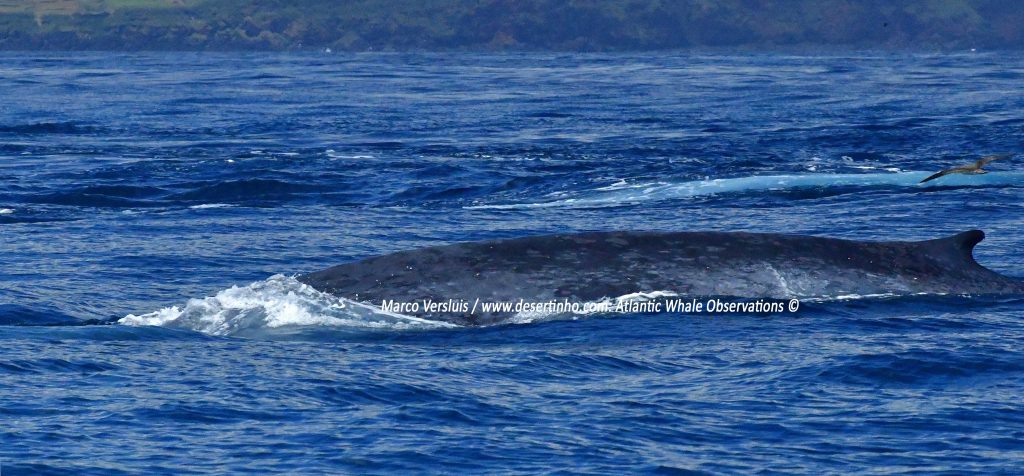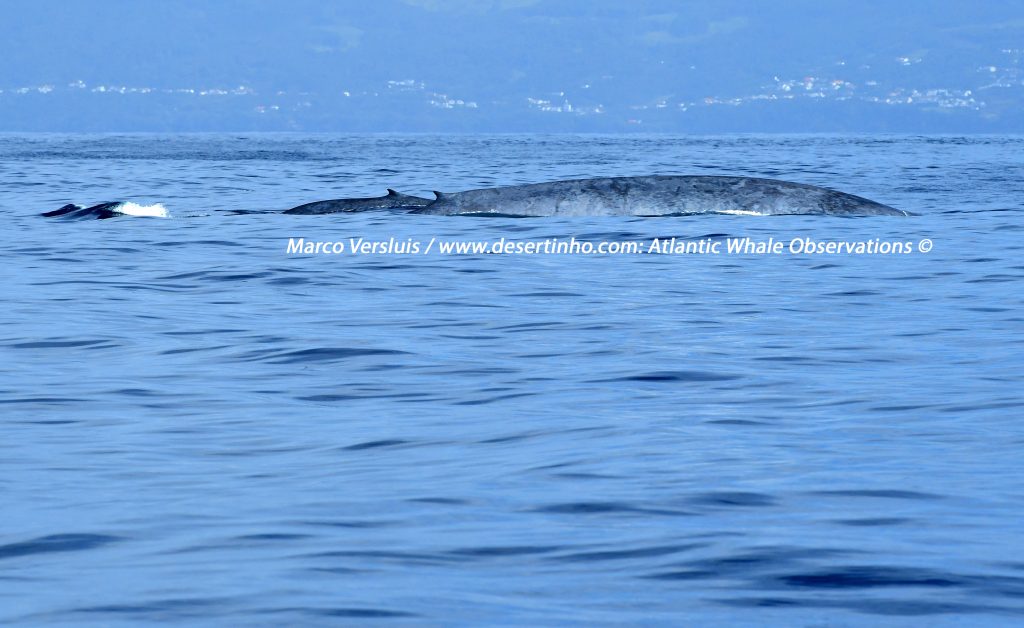Desertinho Atlantic Whale observations works together with several Blue whale (Balaenoptera musculus) Whale Photo-ID projects on the Atlantic Ocean since 2012. I’am really proud to share my data, and information, together with other “Blue Whale” Photo-ID researchers worldwide. The last 3 years I allready achieved some amazing Blue whale photo-ID matches on the Atlantic Ocean. It’s hard to identify Blue whales because only 17% of them shows theire fluke. So to identify them by theire fluke “fingerprint” is almost impossible.
So these days we identify Blue whales by thier so called specific “spots” on their body. Desertinho’s Blue whale photo-ID contributes to understand just a little bit more about Blue whale their migration routes, age, behaviour, and feeding patterns in the Atlantic. The photo you see below is about a Blue whale that has a real specific marking namely it’s very hooked dorsal fin. I observed him, or her, in 2017 near the Azores and I’am very proud that this induvidual Blue whale, like the Blue whale photo on my homepage, ended up together with both photos, in one of the leading Blue whale photo-ID catalogs of the world. For me it is Blue whale number 2 that ended up in this catalogue and there are even more Blue whales to come like a mother Blue whale together with her calf. We are working on both their identification at the moment that I updated this page.




Desertinho Atlantic Whale observations werkt, sinds 2012, mee aan diverse internationale Blauwe vinvis “Walvis Photo-ID” projecten. Ik ben er trots op dat wij onze data, en informatie, delen met diverse walvis onderzoekers wereldwijd. De afgelopen jaren heb ik een aantal Blauwe vinvis (Balaenoptera musculus) Foto-ID matches kunnen maken. Al deze waarnemingen van Blauwe vinvissen levert mij, en anderen, veel waardevolle informatie op voor onderzoek naar hun migratie routes, leeftijd, gedrag en voeding patronen. Het is bijzonder lastig om een Blauwe vinvis te kunnen identificeren per individu. Normaal gesproken worden walvissen herkent aan de “vingerafdruk” van hun staartvin maar in het geval van Blauwe vinvissen is dit lastig omdat maar 17% van alle Blauwe vinvissen hun staartvin laat zien.
Een uitzondering op de bovenstaande regel is de foto die je hier boven ziet. Deze Blauwe vinvis heeft namelijk een heel bijzonder kenmerk namelijk zijn sterk “gehoekte” rugvin. Ik observeerde deze Blauwe vinvis in 2017 in de Azoren en ben ik er trots op dat deze Blauwe vinvis, samen met de Blauwe vinvis op mijn homepage, beiden zijn opgenomen in de belangrijkste catalogus ter wereld voor wat betreft Blauwe vinvis foto-ID. Voor mij persoonlijk is deze Blauwe vinvis het 2de unieke individu dat in deze belangrijke catalogus terecht is gekomen. Maar er komt nog meer onderzoek want ik heb meerdere Blauwe vinvissen geobserveerd in die periode zoals bijvoorbeeld een moeder met haar kalf. Heel bijzonder en op dit moment ligt mijn focus erop om moeder en kalf te kunnen identificeren. Haar kalf zal uiteindelijk mijn 3de unieke Blauwe vinvis identificatie kunnen worden. Wordt vervolgt!